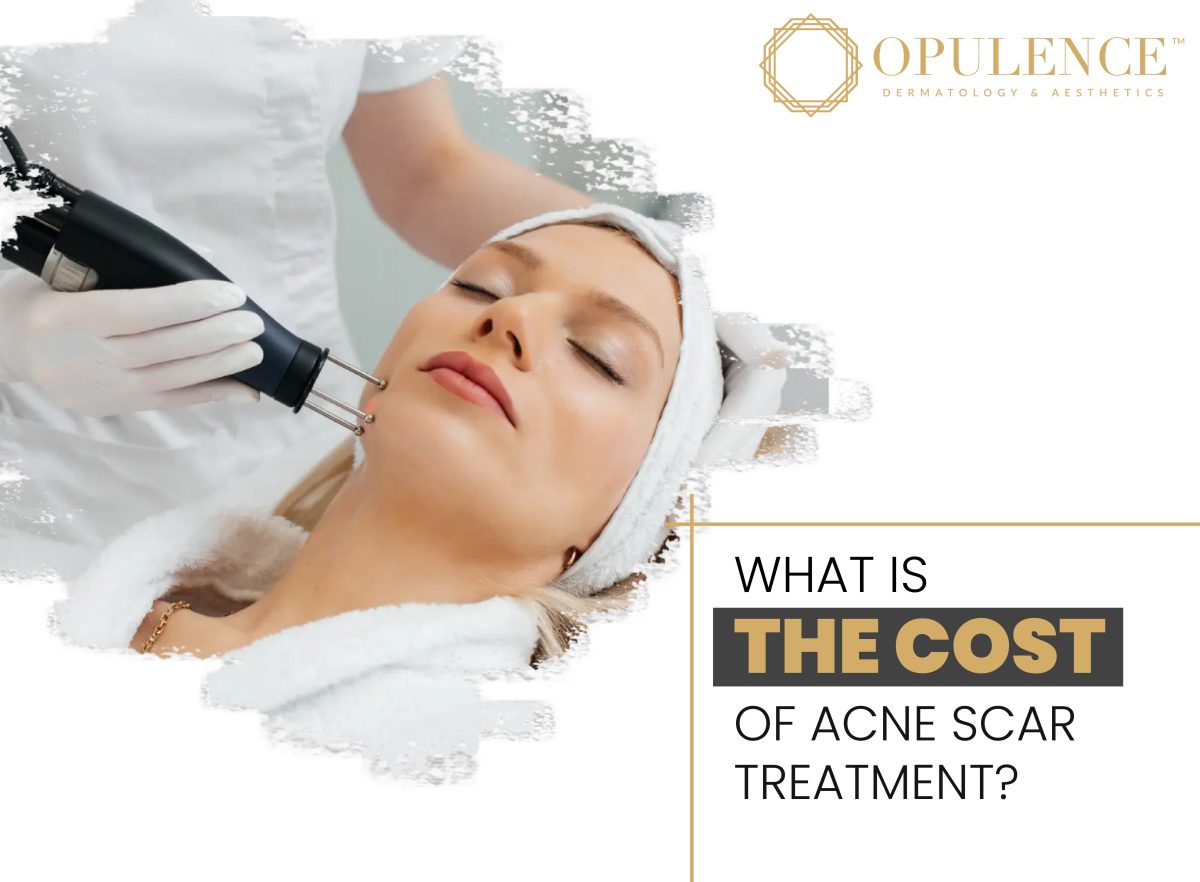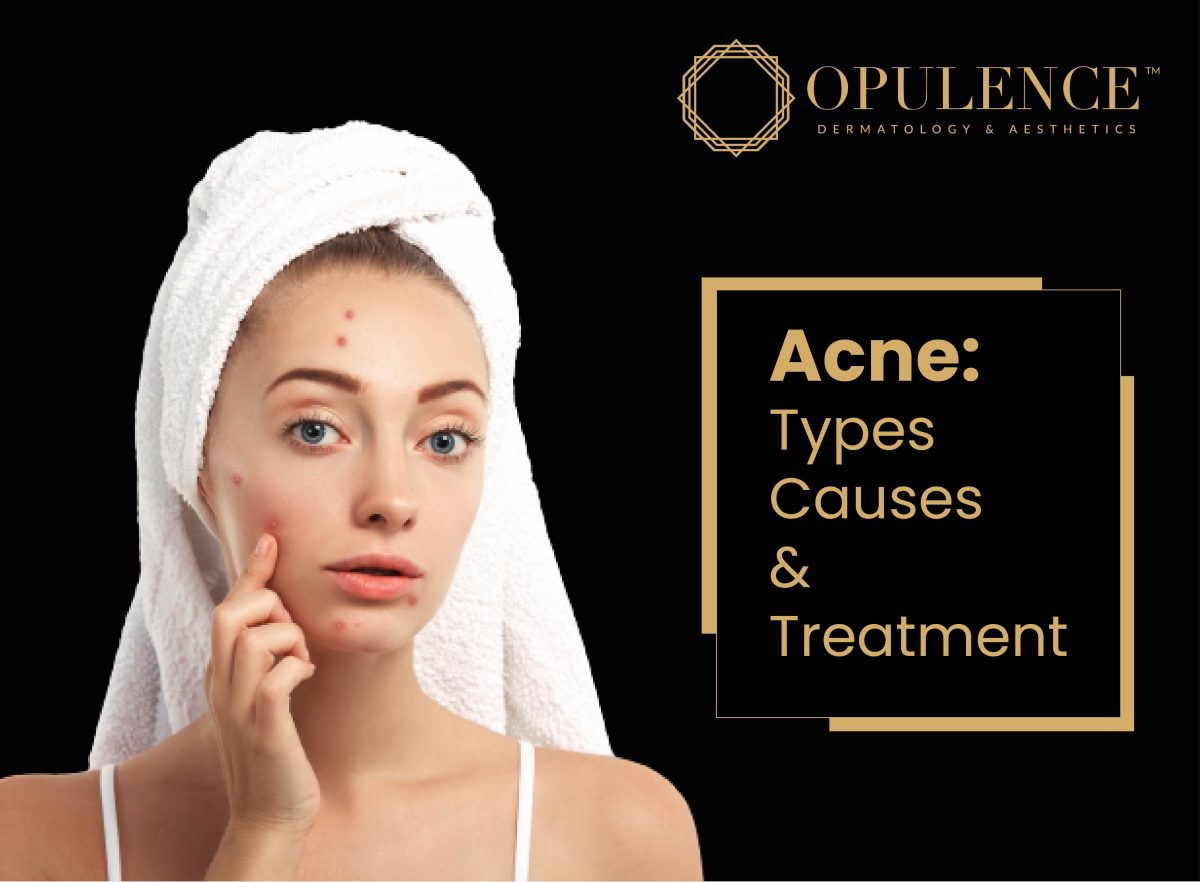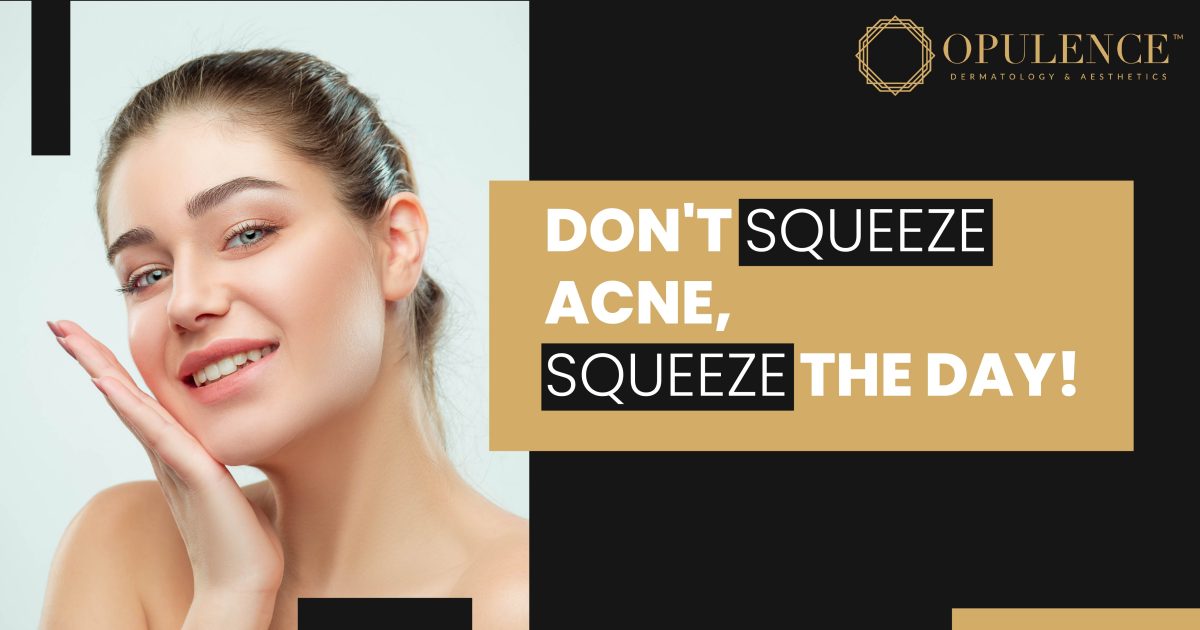ACNE SCARS. TYPES. TREATMENT

Do you still remember those scars at night? Do they still haunt you?
It could be anything, from an accident, a fight, or just acne scars.
But they still take a toll on your mind, don’t they?
In this guide, we’ll help you learn about facial scars and facial scar treatments.
Opulence Dermatology & Aesthetics understands your skin well and helps you understand it better too with the help of the best dermatologist in Ahmedabad.
As we all know, skin protects all our body’s assets from external factors.
It can get scarred in the process of that protection.
For Example, a piece of silk.
If it tears in any case, it cannot go back to how it used to be.
But in this case, your burn, injury, or other trauma which has caused a scar can be corrected.
Now small facial scars are easy to conceal.
But what about the deep and big scars?
The answer is facial scar treatments as we mentioned earlier.
So without any further wait, let’s get into it.
How Does the Scarring Take Place?
You remember how you got hurt right? You wished it to heal as soon as possible.
But, this healing is what leaves the scars behind.
Scars are just a process of healing your injury.
The skin heals itself by producing new tissue to bring the wound together and fill in any gaps left by the injury.
Collagen is the most common protein found in scar tissue.
What can be the signs of these scars?
Let’s have a look.
On lighter skin, scars are frequently pink or red when they initially appear.
The pinkish tone diminishes with time, and the scar turns noticeably darker or lighter than the skin.
Scars may look like dark spots on people with dark skin.
Scars can itch and be uncomfortable or irritating at times.
Do you wonder why has your scar not disappeared yet?
Because the scar depends on many factors.
These are:
- A type of scar caused by an injury or an event, such as surgery, a burn, or severe acne.
- The wound’s size, severity, and placement on the face.
- Stitches or bandages are used to treat the wound.
- Your age, genes, ethnicity, and overall health are all factors to consider.
The treatment of facial scars depends on their type.
What is the Type of Facial Scars?
- Atrophic Scars
These scars resemble spherical pits or minor skin irregularities and are also known as depressed scars.Chickenpox or acne are common causes of atrophic scars.
The types of atrophic scars are ice pick scars, rolling scars, and boxcar scars.
The skin gradually loses collagen and flexibility as you age and acne scars may become more visible.
- Contracture Scars
Contracture scars often develop after a burn injury.They cause the skin to tighten and could lead to skin contraction which makes your skin hard to move.
As this scarring can occur over muscles, nerves, or joints, it can affect the face in different ways.
For Example, difficulty moving your jaw as it is a hinge joint.
Hypertrophic and Keloid Scars
When you run your finger over a hypertrophic scar, you can feel it.These elevated scars may reduce in size over time, but they never completely disappear.
Keloid scars are raised above the skin’s surface and extend beyond the location of wounding.
Scar tissue that has developed out of control can become big and restrict movement.
Hypertrophic scars don’t expand or spread beyond the damaged area, unlike keloids.
Flat Scars
As you can figure out from the name, flat scars are flat on the surface of your skin.These may be raised at first, but with time they flatten out.
What makes them a scar is that they are a little lighter or darker than the surrounding skin tone.
These scars can be stubborn and might even stay with you for a lifetime.
Until…
You want to treat them.
There are various treatments for these scars.
We know you have waited to read this.
So, finally, let’s take a look at the treatments.
Treatments of Facial Scars
Several facial scar treatments can reduce your scars and make them less noticeable just like you wished for.
A dermatologist might recommend your treatment or a combination of multiple treatments.
Opulence Dermatology & Aesthetics uses state-of-the-art technologies to give you the best treatment.
Plus, you get personal as well as professional care from us.
Facial scar treatment depends on the following factors:
– Type of the scar
– Size of the scar
– Location of the scar on the face
– Your age and scar’s age
– Whether the scar is causing you pain
So what are these treatments we are talking about?
- Chemical peels
Chemical peels are made up of mild acids that are applied to the skin in a single layer.
As a result, the epidermis (top layer of skin) exfoliates and peels away, revealing a new less scarred layer of the skin.
Laser Resurfacing
Damaged collagen beneath the epidermis is heated using a laser. The wound-healing response of the body is used to produce new, healthy collagen.This encourages the growth of new skin to take the place of the old.
Ablative and Non-Ablative laser resurfacing are the two types of laser resurfacing.
Opulence Dermatology & Aesthetics can assist you in deciding which is the best option for you.
Fillers
A chemical such as hyaluronic acid is injected into the location of the depressed scar to elevate the skin and improve the appearance.Excision
The dermatologist uses this technique is used by the dermatologist to an incision into the skin, remove the acne scar, and stitch up the wound.This is a significantly more successful and time-saving approach to treating these more troublesome scar types.
It’s used to smooth out a scar.
Grafting
During grafting, the doctor makes a hole in the skin, removes the scar, and replaces it with a plug of fresh skin.Skin plugs are generally retrieved from behind the ear lobe after they have been placed in the treatment region.
The plugs are cemented in place for about a week to allow them to recover. It results in a smoother scar that can be rejuvenated with a skin resurfacing procedure.
Subcision
In this technique, a needle is used to cut apart fibrous bands that pull scar tissue down into the lower parts of your skin.
This treatment raises a depressed scar while simultaneously causing collagen to be secreted at the needle insertion site.
The skin is released so that it can resurface and lay flat naturally.
Microneedling Radio Frequency (MNRF)
Small sterile needles are used to make microscopic holes in the skin during this process.
This is done without injuring the epidermis at various depths, such as acne scars.
The use of Radiofrequency energy by needles causes direct heating of the dermis, resulting in new collagen production and dermal(skin) thickening.
Depending on the factors we mentioned above, these treatments are divided into different grades of mild, moderate, and severe.
A combination of these treatments can be advised by the dermatologist to minimize the appearance of the scar effectively.
A Word from Opulence Dermatology & Aesthetics…
Facial scars are a very common thing as we all know.
But some extreme ones can even lead to skin cancer.
They do not only affect you physically.
But whenever you want to show up in public, you might feel hesitant because of it.
Your social life matters to you, right?
So what do you plan to do?
Life’s all about balancing the physical and mental aspects and facial scars don’t hold the power to make you feel down.
Book a consultation and get rid of your facial scars today !














